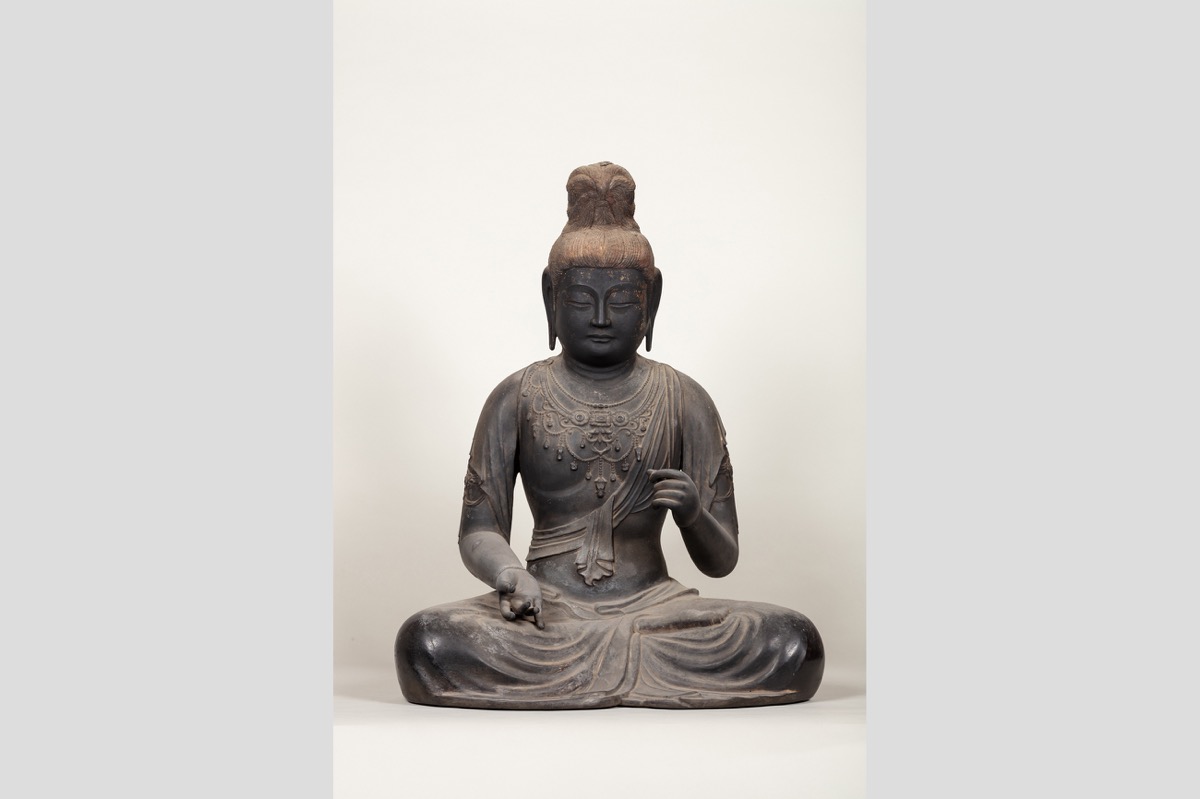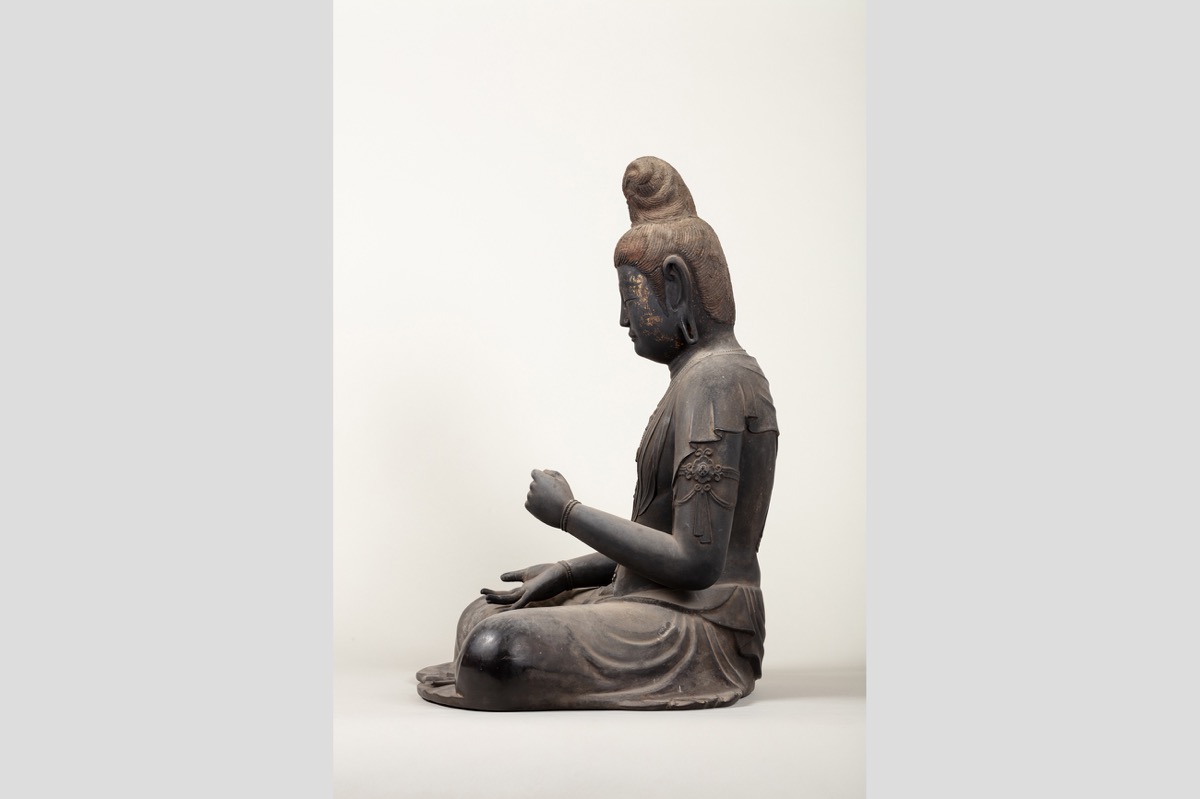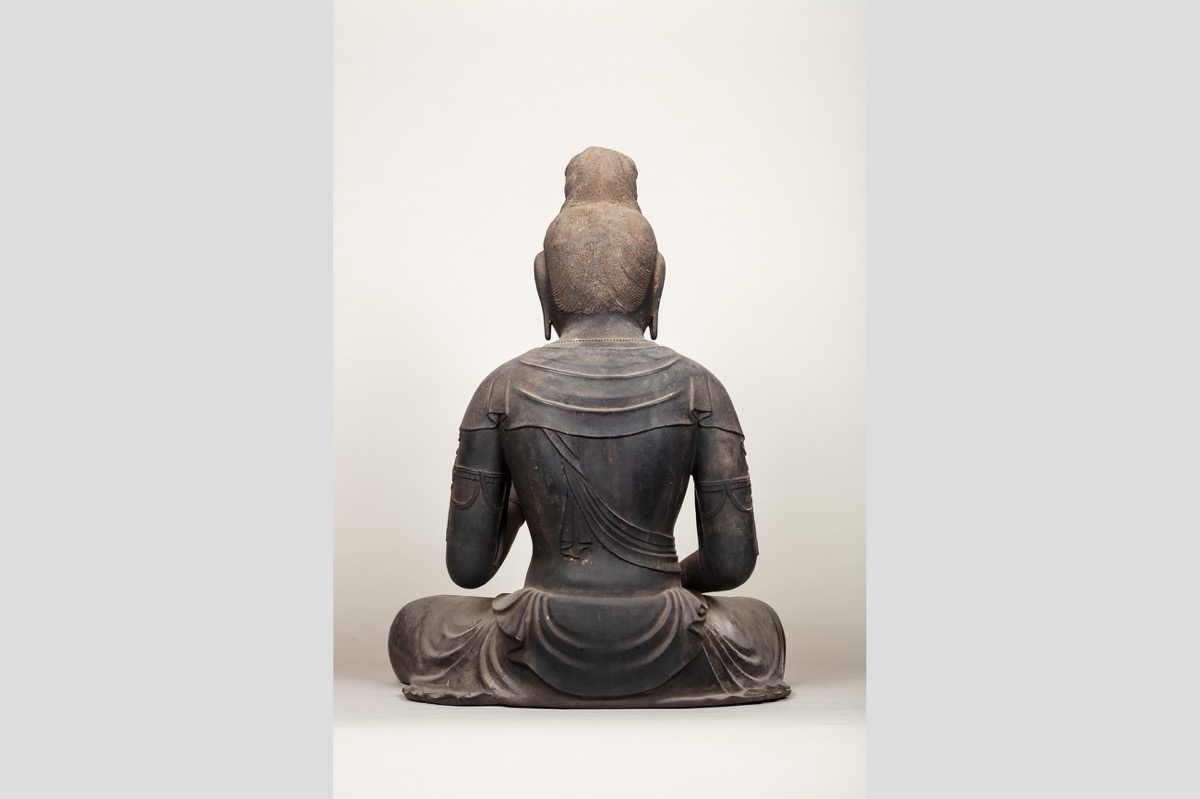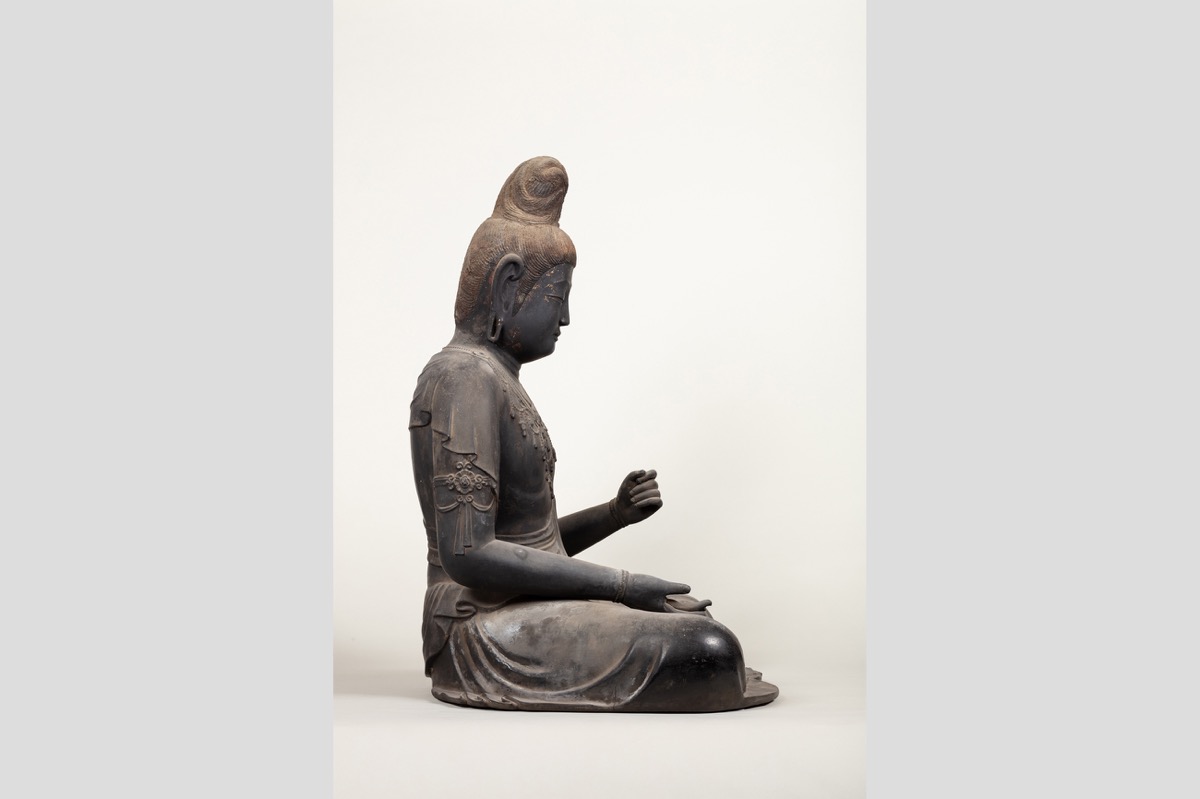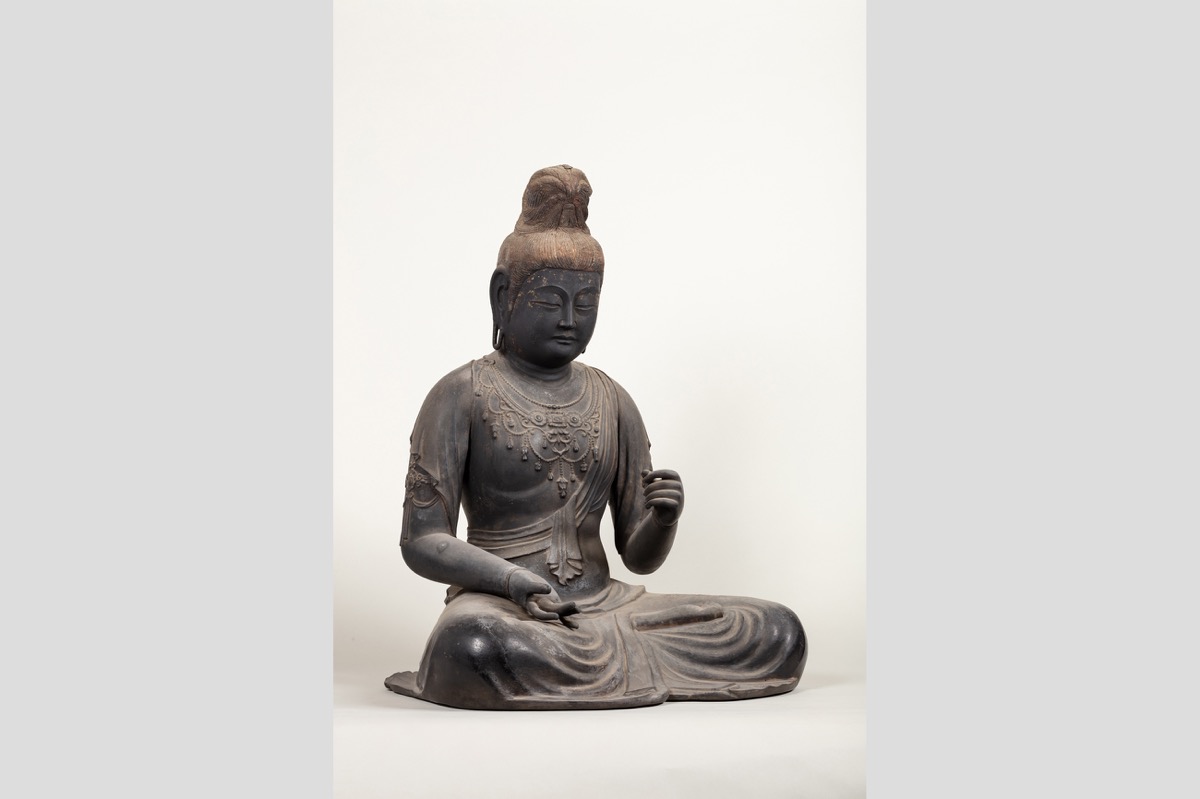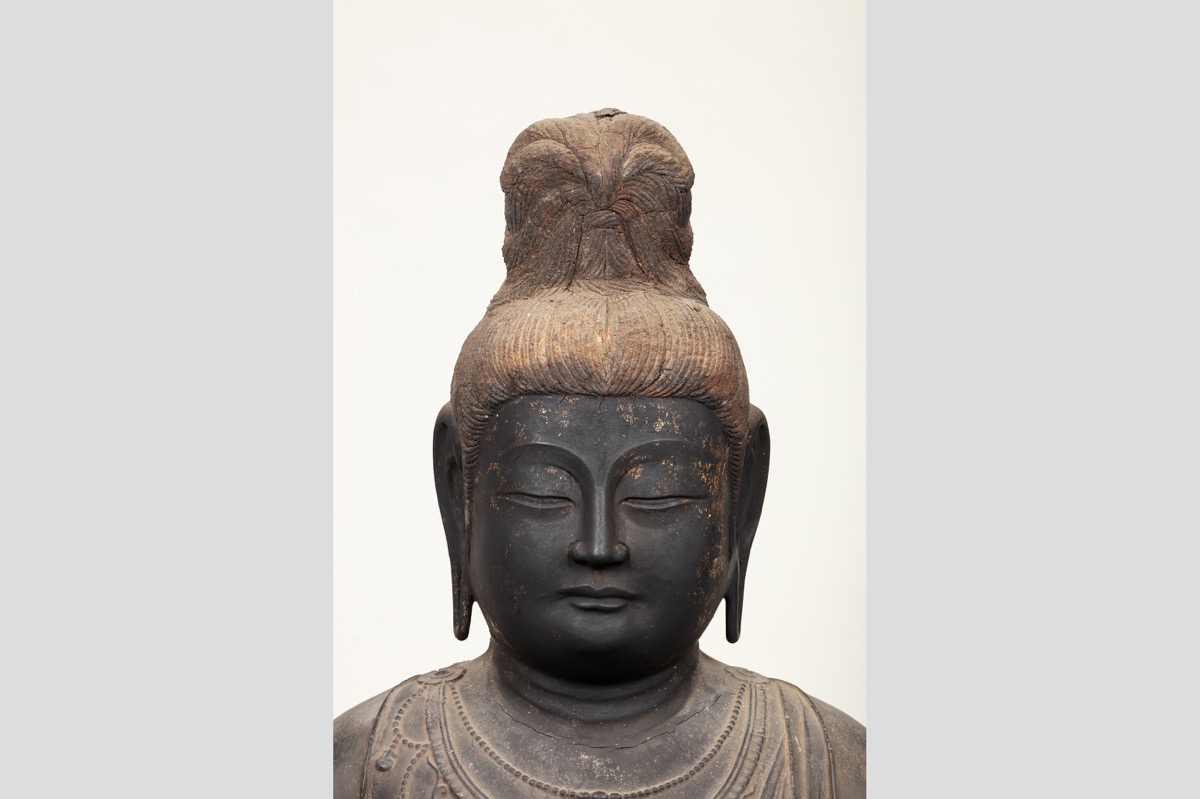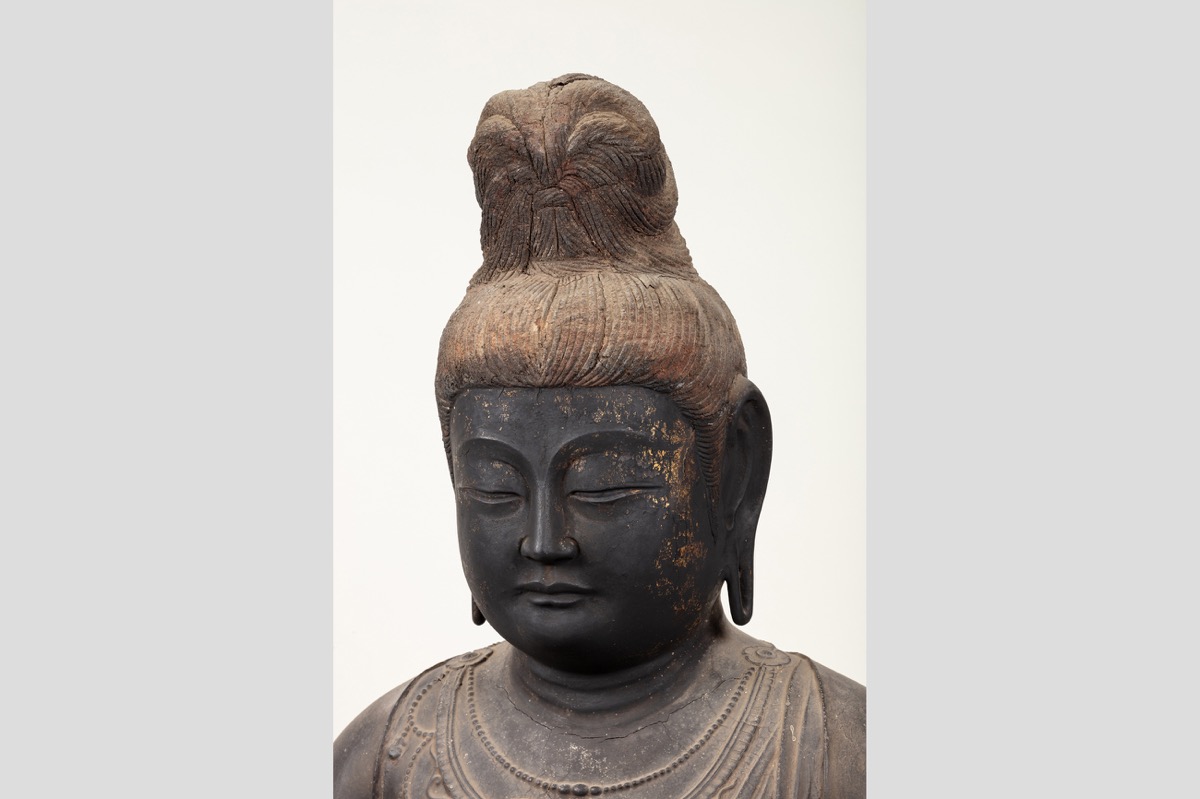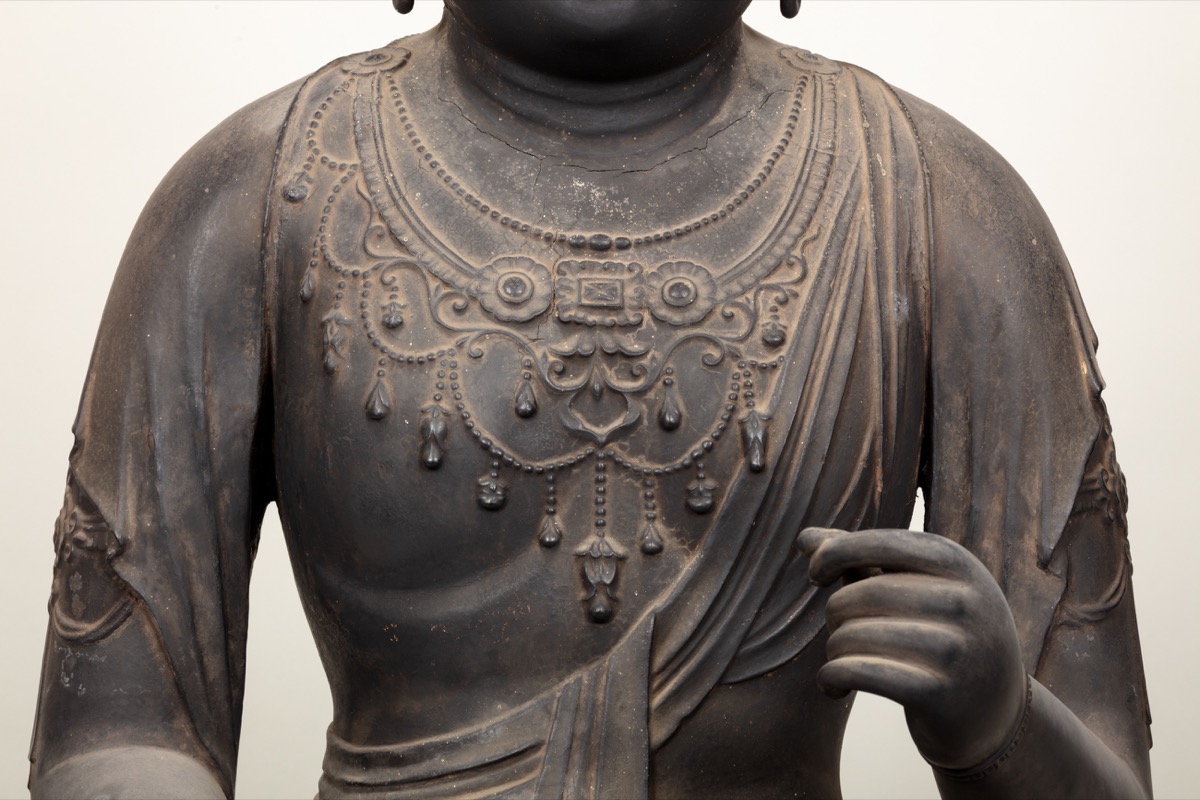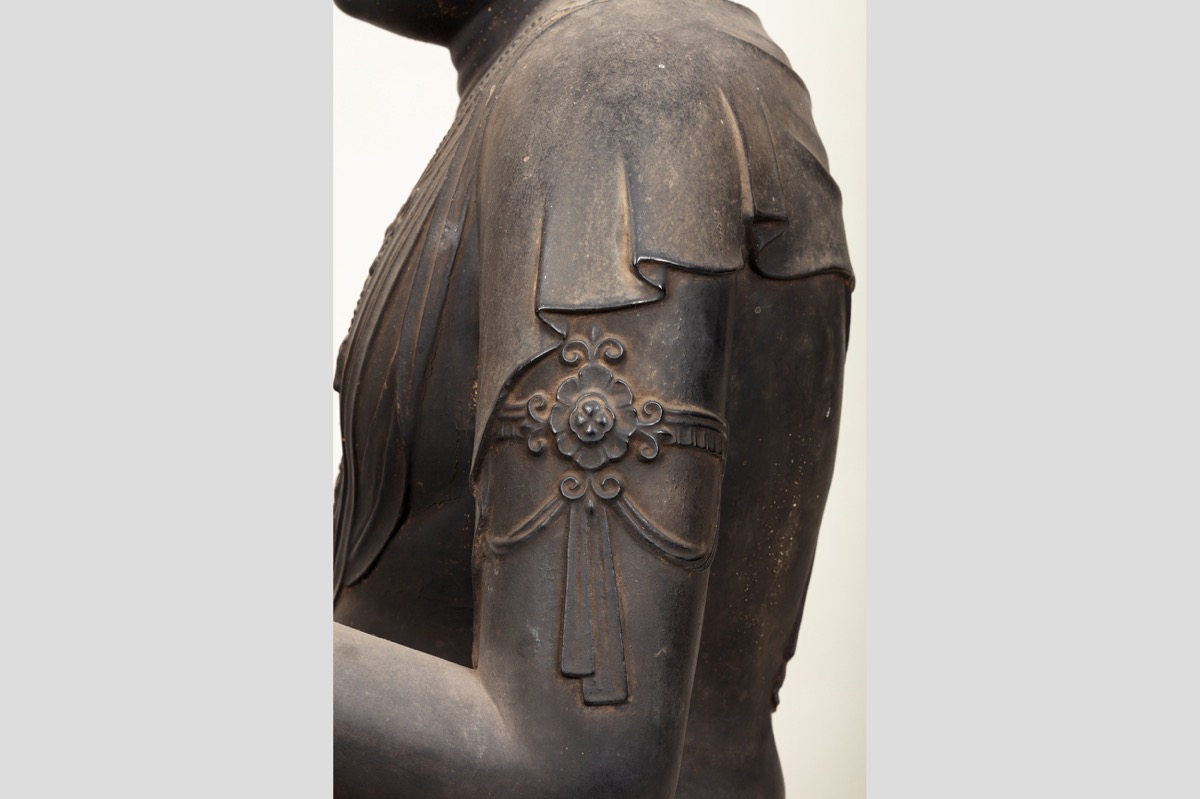Kanshitsu Shokannon ZazoSeated Statue of Kannon, the Goddess of Mercy (dry lacquer)
| District | Arts and Crafts | Period | ー |
|---|---|---|---|
| Set Content/Set Date | Important Cultural Property(Sculpture)・西暦1941.11.06 | ||
| Owner | Gankoji Temple | Location | 1248 Zotakorehiro, Sanuki, Kagawa |
This precious Buddhist statue made using the dry lacquer (kanshitsu) technique is one of the few remaining outside the area of the ancient capital Nara. Dry lacquer is a method used for making Buddhist statues transmitted from ancient China, and is the same method that was used to make the statue of Ashura, a national treasure, at Kofukuji Temple in Nara.
First, a clay mold is made, which is then covered with pieces of hemp cloth and lacquer. After this, the inner clay mold is removed, then a frame is inserted to create the structure and serve as support. The outer layer is formed using various plant materials such as sawdust mixed with lacquer into a paste. Once the surface is finished with black lacquer, it is further decorated with color and gold leaf.
The Kannon statue wears a gorgeous, many-layered accessory around the neck, as well as jewelry on the upper arms visible underneath the gauze scarves (tenne, "heavenly garments"). The intricate, delicate shapes seen in this jewelry as well as the way the texture of the soft garment fabric is expressed in the sculpture are unique to dry lacquer statues. The graceful, youthful face and sprightly figure conveys the style of 8th-century Nara Period, and this statue’s elegant, sophisticated form suggests it was made in the capital. This precious Buddha statue demonstrates the deep ties between ancient Sanuki and the capital.

